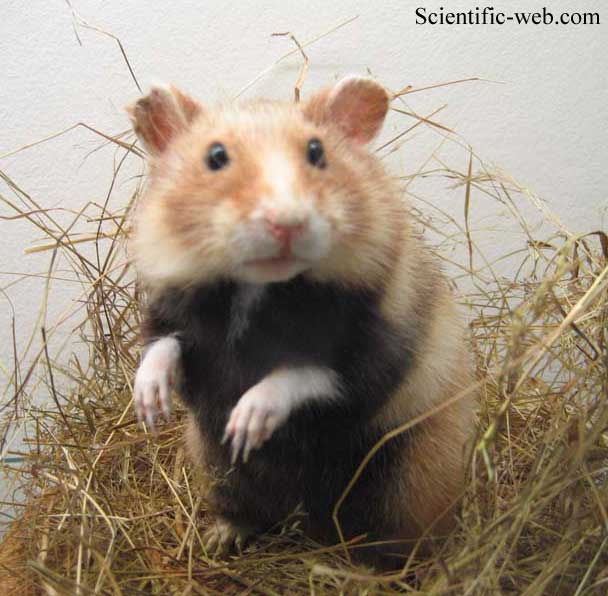Cricetus cricetus, Photo: Michael Lahanas Cladus: Eukaryota Name Cricetus cricetus (Linnaeus, 1758) Vernacular names References * Cricetus cricetus on Mammal Species of the World. The European Hamster, Cricetus cricetus, also known as the Black-bellied Hamster or Common Hamster, is a hamster which is the only species of the genus Cricetus. It is native to a large global range, extending from western Europe, through central and eastern Europe, Russia, and Kazakhstan, reaching as far east as the Yenisey river. The animal is widely considered a farmland pest, and has also been trapped for its fur. Across its global range it is considered of least concern but in many individual European countries it is considered critically endangered.
The European hamster has brown dorsal fur with white patches. The chest and belly are black. The tail is short and furred. It is much larger than the Syrian or dwarf hamsters which are commonly kept as pets. It weighs 220-460 g (8-16 ounces) and can grow to 20–35 cm (8-14 inches) long with a tail of 40–60 mm (1.5-2.3 inches). Its dental formula is 1/1, 0/0, 0/0, 3/3. Behavior The Common Hamster is a nocturnal or crepuscular species. It lives singly but in a complex burrow system. It eats seeds, legumes, root vegetables and grasses and also insects. It transports its food in its elastic cheek pouches to the food storage chambers. These may be quite large and may consist of a total of 65 kg of food including 5 kg of potatoes and 15kg of grain[1] It hibernates between October and March. During this time it wakes every five to seven days to feed from the storage chambers. The adults reach sexual maturity when they are about 43 days old and breed from early April to August. The gestation period is 18–20 days and the size of the litter ranges from 3–15 young which are weaned when aged three weeks.[1] Distribution It is typically found in low-lying farmland with soft loam or loess soils, although it may also inhabit meadows, gardens or hedges. It is found from Belgium (e.g. Bertem where there is a thriving population) and Alsace in the west, to Russia in the east, and Romania in the south. In captivity, the European hamster has an unusually long lifespan, living up to eight years. In 2007 the European Commission threatened to fine France €17m for failing to protect the last remaining colony of the Black-bellied Hamster in Western Europe.[2] References 1. ^ a b MacDonald, David; Priscilla Barret (1993). Mammals of Britain & Europe. 1. London: HarperCollins. pp. 236–237. ISBN 0002197790. * Kryštufek, B., Vohralík, V., Meinig, H. & Zagorodnyuk, I. 2008. Cricetus cricetus. In: IUCN 2010. IUCN Red List of Threatened Species. Version 2010.3. Downloaded on 17 October 2010. Source: Wikispecies: All text is available under the terms of the GNU Free Documentation License |
|


